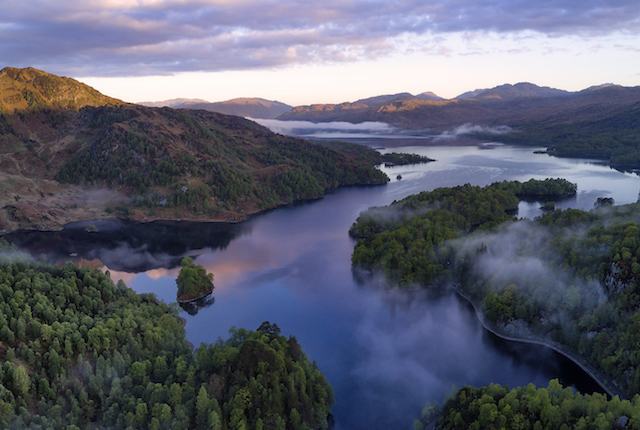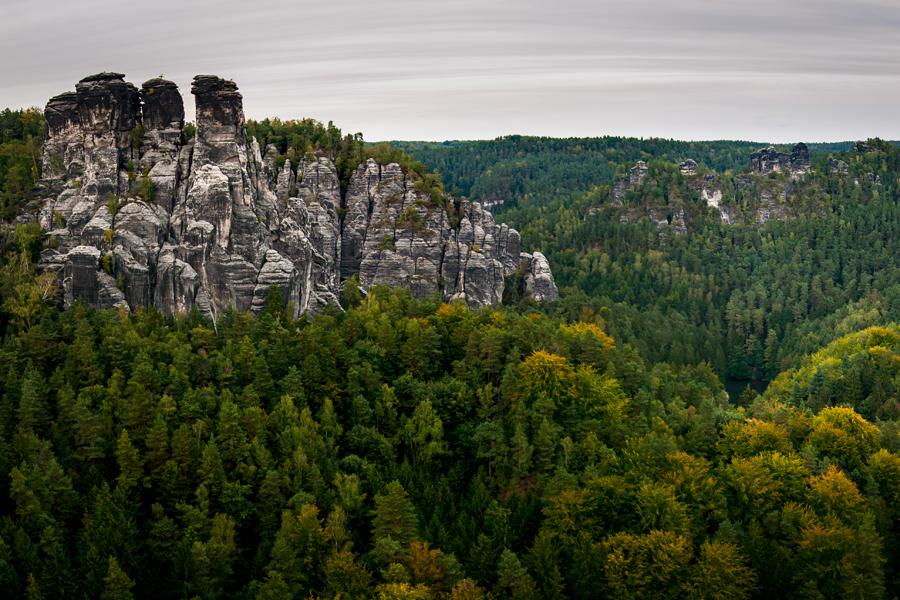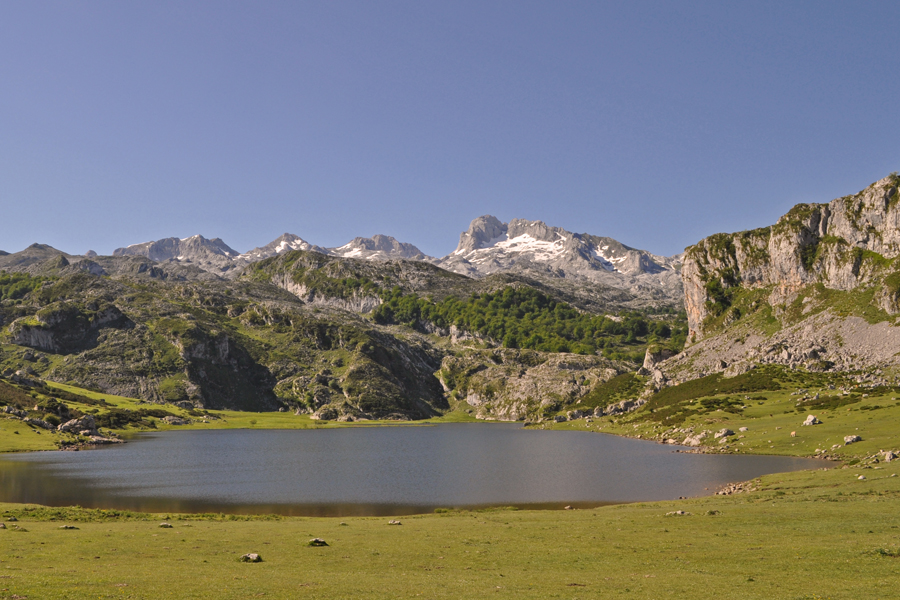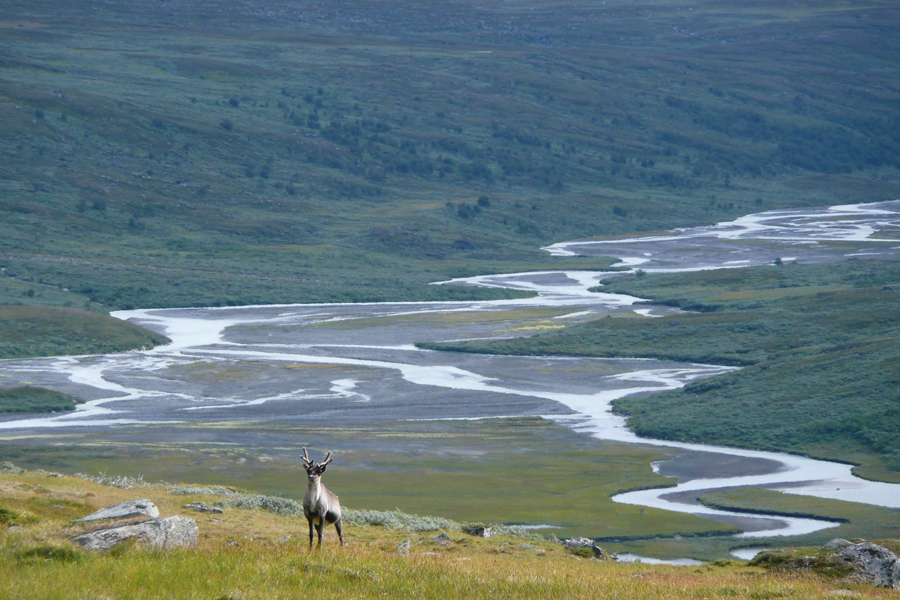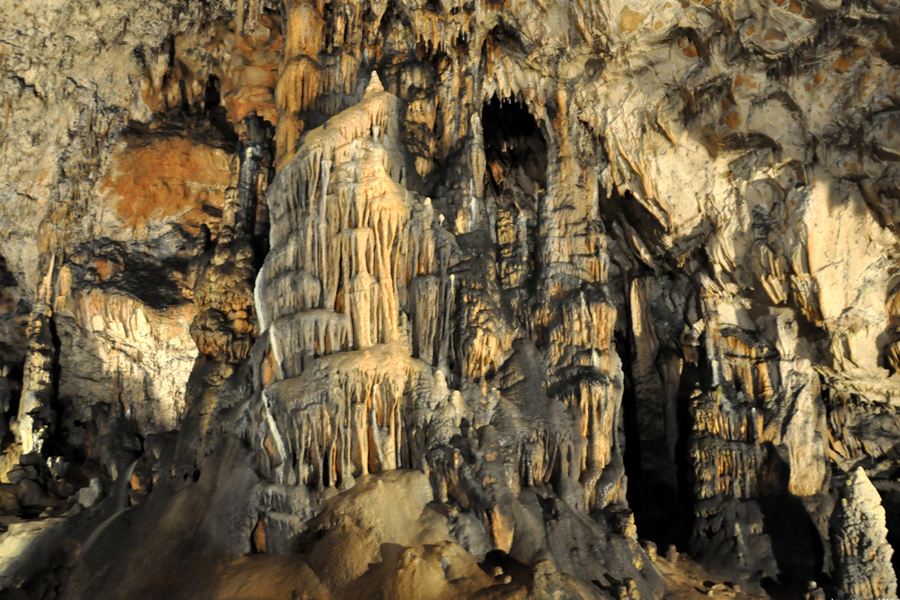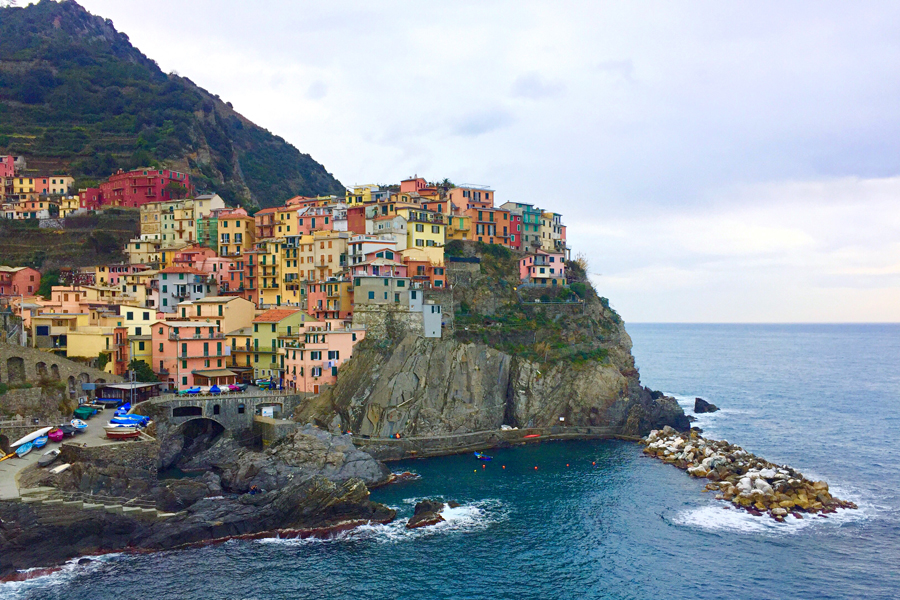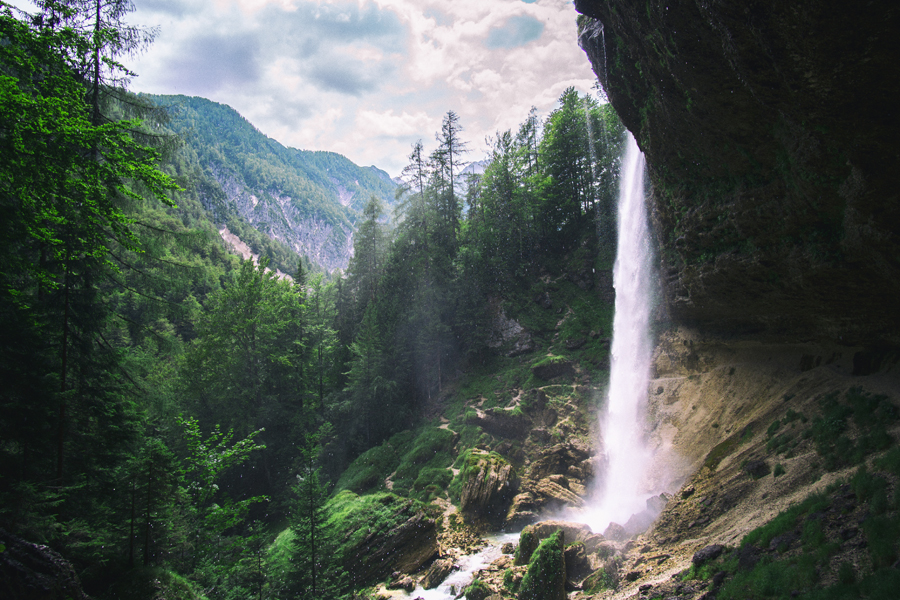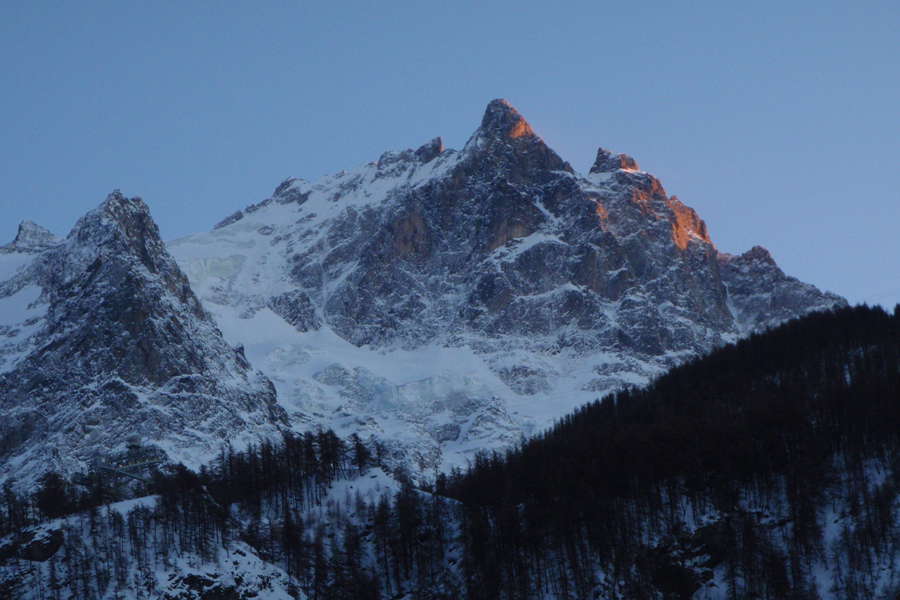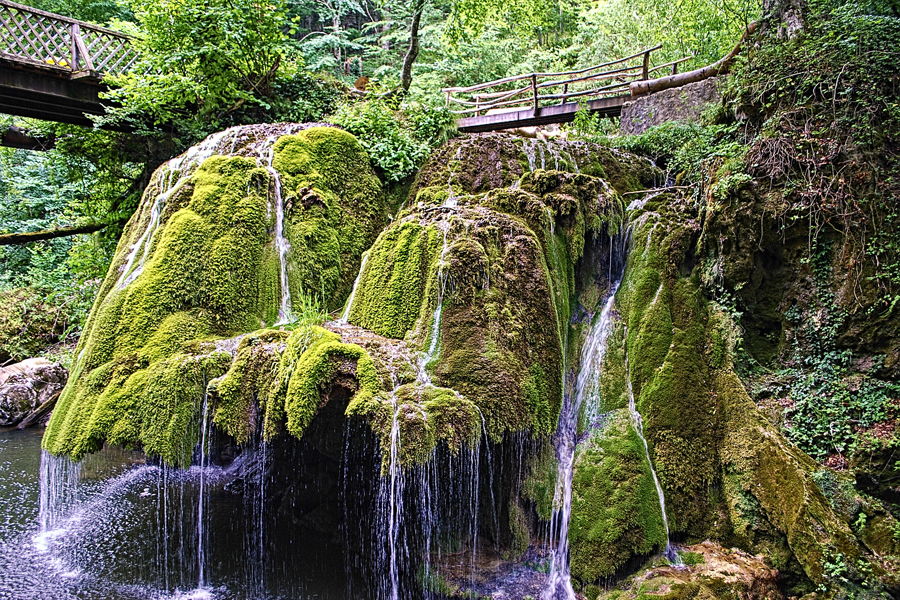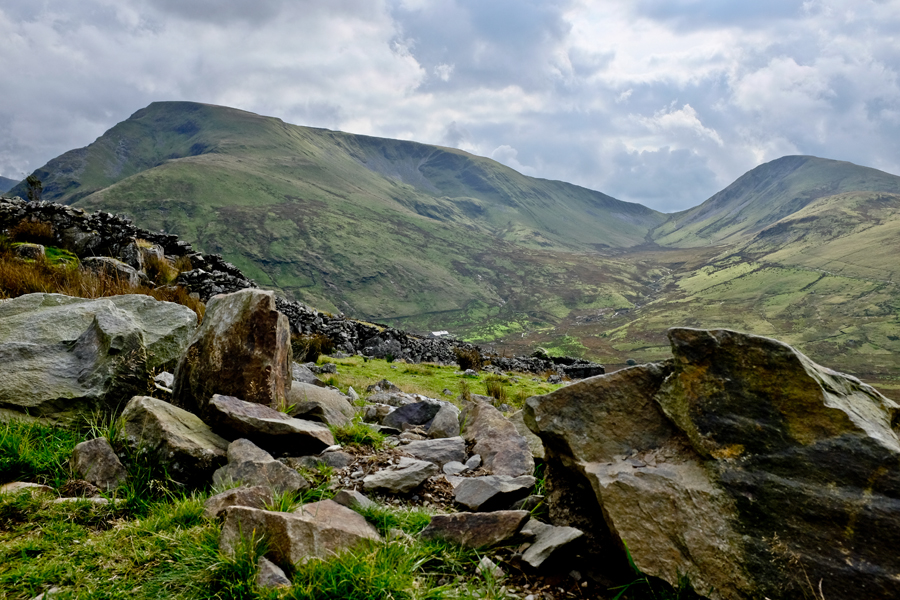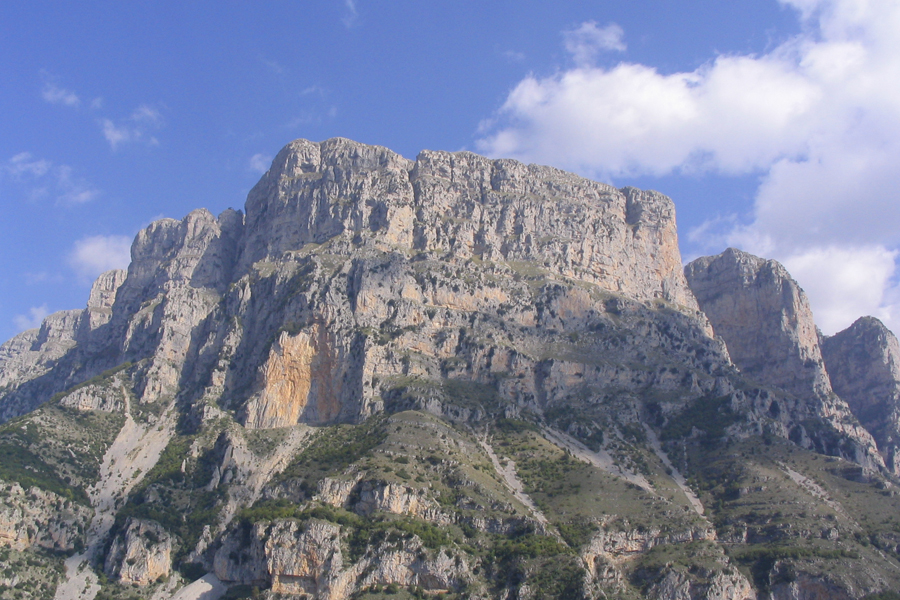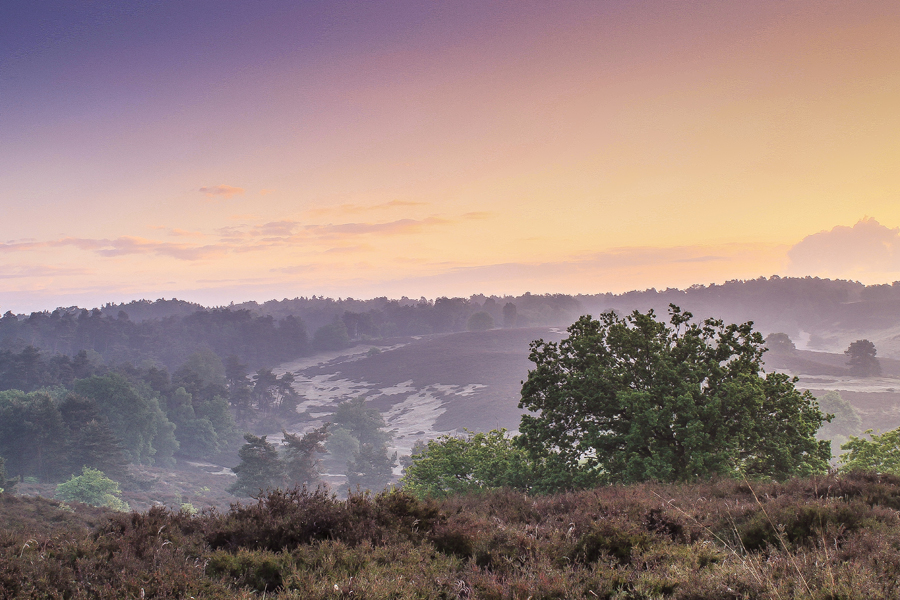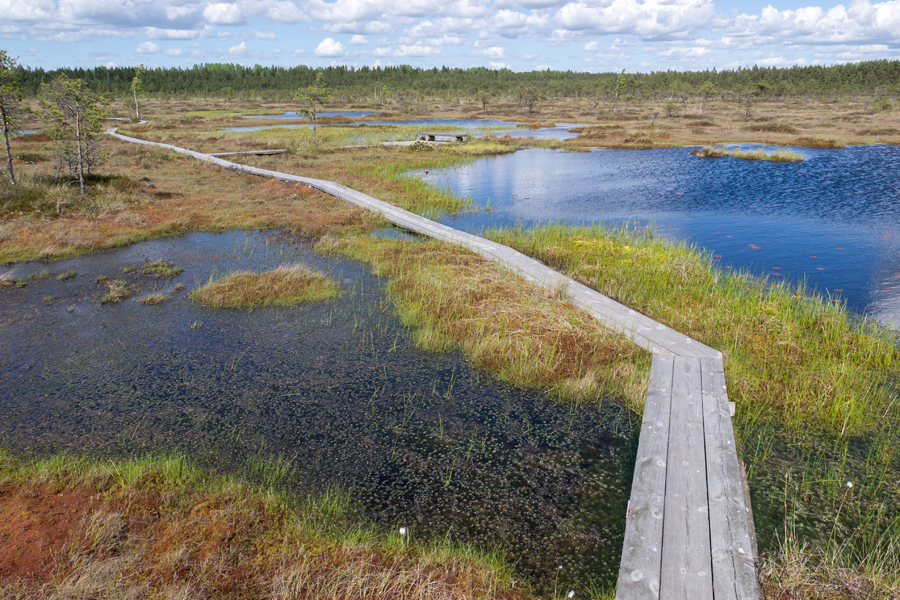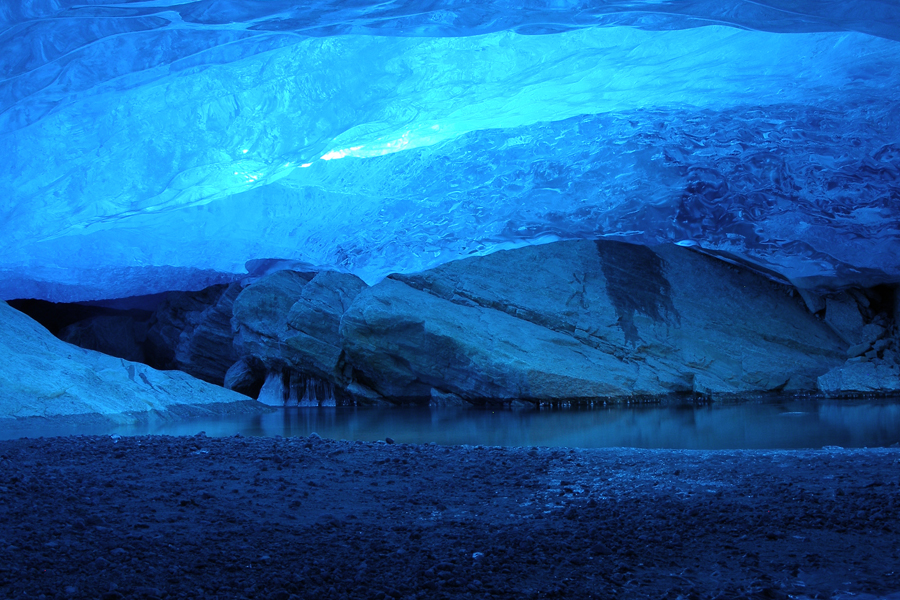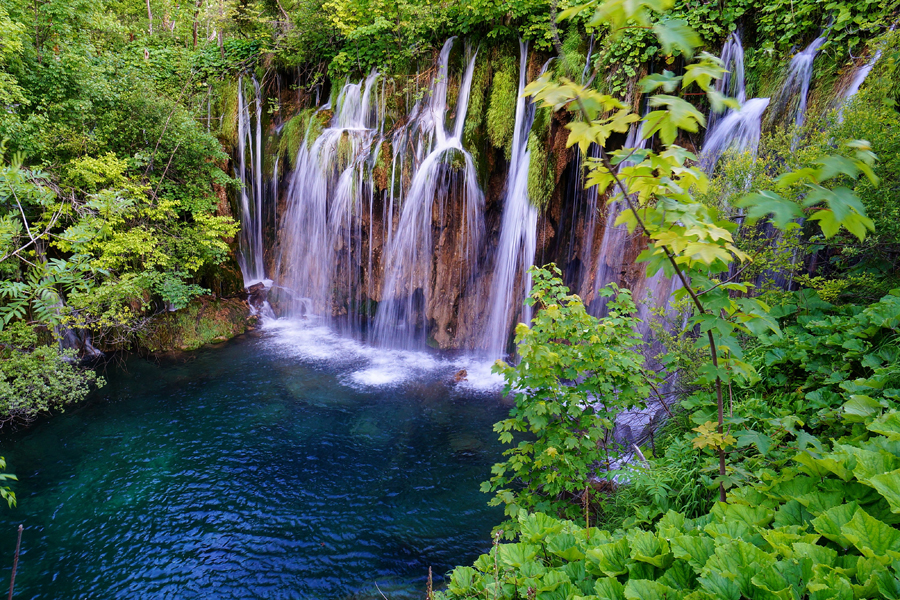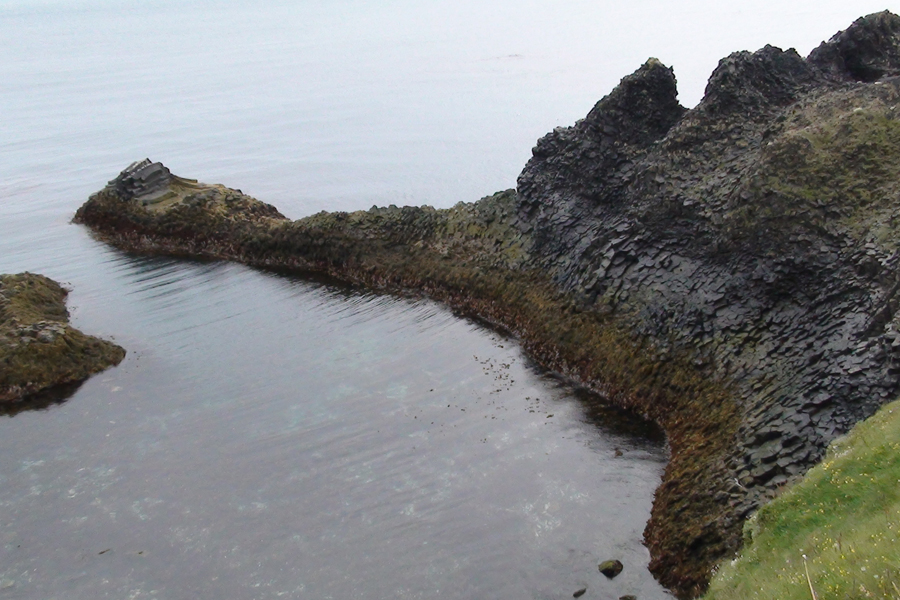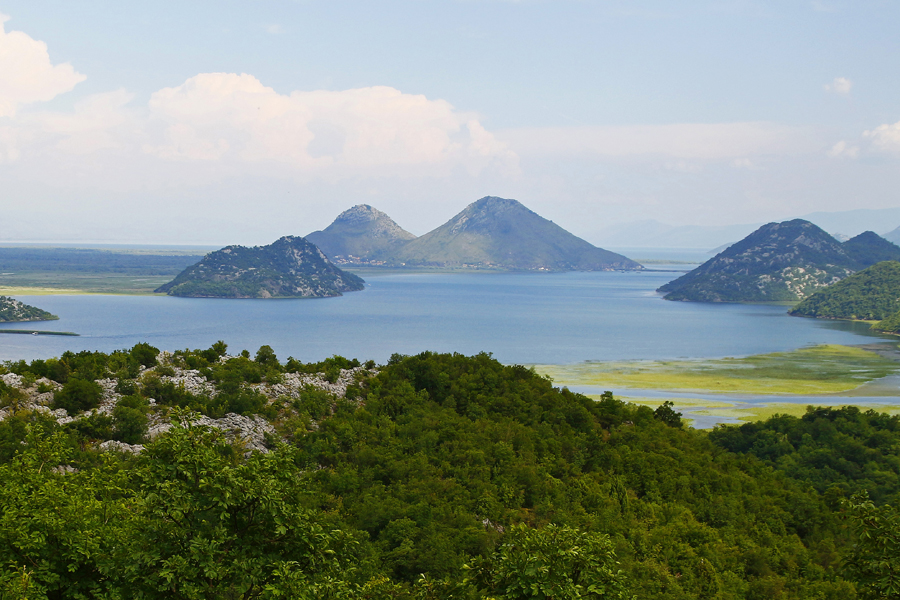Travelers to Europe tend to head straight for its cities. But while the bright lights of Paris, busy markets of London, and storied streets of Rome are all worth a visit, city parks don’t always provide the nature fix we crave. To truly appreciate Europe's flora and fauna, you’re better off visiting its protected spaces. The national parks offer an endless supply of stunning scenery and unbridled adventure. From Iceland to Italy, Spain to Slovenia, there are forests to trek, mountains to scale, lakes to swim, glaciers to traverse, caves to explore, plants to smell, and animals to meet. So, the next time you’re planning a European vacation, leave some time for the continent’s most pristine and enchanting national parks.
Notice: Undefined offset: 4 in /nas/content/live/stagingstmllc/wp-content/plugins/smartertravel-shared/includes/ads/includes/api.php on line 92
Notice: Undefined offset: 5 in /nas/content/live/stagingstmllc/wp-content/plugins/smartertravel-shared/includes/ads/includes/api.php on line 92
Notice: Undefined offset: 6 in /nas/content/live/stagingstmllc/wp-content/plugins/smartertravel-shared/includes/ads/includes/api.php on line 92
Notice: Undefined offset: 4 in /nas/content/live/stagingstmllc/wp-content/plugins/smartertravel-shared/includes/ads/includes/api.php on line 98
Notice: Undefined index: pass_through_args in /nas/content/live/stagingstmllc/wp-content/plugins/smartertravel-shared/includes/ads/includes/api.php on line 158
Notice: Undefined index: wrapper in /nas/content/live/stagingstmllc/wp-content/plugins/smartertravel-shared/includes/ads/includes/api.php on line 159
Notice: Undefined offset: 4 in /nas/content/live/stagingstmllc/wp-content/plugins/smartertravel-shared/includes/ads/includes/api.php on line 92
Notice: Undefined offset: 5 in /nas/content/live/stagingstmllc/wp-content/plugins/smartertravel-shared/includes/ads/includes/api.php on line 92
Notice: Undefined offset: 6 in /nas/content/live/stagingstmllc/wp-content/plugins/smartertravel-shared/includes/ads/includes/api.php on line 92
Notice: Undefined offset: 4 in /nas/content/live/stagingstmllc/wp-content/plugins/smartertravel-shared/includes/ads/includes/api.php on line 98
Notice: Undefined index: pass_through_args in /nas/content/live/stagingstmllc/wp-content/plugins/smartertravel-shared/includes/ads/includes/api.php on line 158
Notice: Undefined index: wrapper in /nas/content/live/stagingstmllc/wp-content/plugins/smartertravel-shared/includes/ads/includes/api.php on line 159
Notice: Undefined offset: 4 in /nas/content/live/stagingstmllc/wp-content/plugins/smartertravel-shared/includes/ads/includes/api.php on line 92
Notice: Undefined offset: 5 in /nas/content/live/stagingstmllc/wp-content/plugins/smartertravel-shared/includes/ads/includes/api.php on line 92
Notice: Undefined offset: 6 in /nas/content/live/stagingstmllc/wp-content/plugins/smartertravel-shared/includes/ads/includes/api.php on line 92
Notice: Undefined offset: 4 in /nas/content/live/stagingstmllc/wp-content/plugins/smartertravel-shared/includes/ads/includes/api.php on line 98
Notice: Undefined index: pass_through_args in /nas/content/live/stagingstmllc/wp-content/plugins/smartertravel-shared/includes/ads/includes/api.php on line 158
Notice: Undefined index: wrapper in /nas/content/live/stagingstmllc/wp-content/plugins/smartertravel-shared/includes/ads/includes/api.php on line 159
Notice: Undefined offset: 4 in /nas/content/live/stagingstmllc/wp-content/plugins/smartertravel-shared/includes/ads/includes/api.php on line 92
Notice: Undefined offset: 5 in /nas/content/live/stagingstmllc/wp-content/plugins/smartertravel-shared/includes/ads/includes/api.php on line 92
Notice: Undefined offset: 6 in /nas/content/live/stagingstmllc/wp-content/plugins/smartertravel-shared/includes/ads/includes/api.php on line 92
Notice: Undefined offset: 4 in /nas/content/live/stagingstmllc/wp-content/plugins/smartertravel-shared/includes/ads/includes/api.php on line 98
Notice: Undefined index: pass_through_args in /nas/content/live/stagingstmllc/wp-content/plugins/smartertravel-shared/includes/ads/includes/api.php on line 158
Notice: Undefined index: wrapper in /nas/content/live/stagingstmllc/wp-content/plugins/smartertravel-shared/includes/ads/includes/api.php on line 159
Notice: Undefined offset: 4 in /nas/content/live/stagingstmllc/wp-content/plugins/smartertravel-shared/includes/ads/includes/api.php on line 92
Notice: Undefined offset: 5 in /nas/content/live/stagingstmllc/wp-content/plugins/smartertravel-shared/includes/ads/includes/api.php on line 92
Notice: Undefined offset: 6 in /nas/content/live/stagingstmllc/wp-content/plugins/smartertravel-shared/includes/ads/includes/api.php on line 92
Notice: Undefined offset: 4 in /nas/content/live/stagingstmllc/wp-content/plugins/smartertravel-shared/includes/ads/includes/api.php on line 98
Notice: Undefined index: pass_through_args in /nas/content/live/stagingstmllc/wp-content/plugins/smartertravel-shared/includes/ads/includes/api.php on line 158
Notice: Undefined index: wrapper in /nas/content/live/stagingstmllc/wp-content/plugins/smartertravel-shared/includes/ads/includes/api.php on line 159
1. Loch Lomond and the Trossachs National Park, Scotland
When it comes to nature, few countries can compete with Scotland. Along the Highland-Lowland divide in Stirling, the wooded Loch Lomond and The Trossachs welcomes visitors with its prolific moors, jutting peaks, and mountainous scenery. The 720-square-mile park is often referred to as Scotland in miniature, as it features such a wide range of the country’s natural phenomena. In fact, there are 21 mountains over 3,000 feet tall, 22 larger lochs, 50 rivers, and two forested parks. Most people choose to hike among the natural beauty, but you can also rent a kayak or canoe. If you get thirsty, just head to a village pub for some ale. You may get lucky enough to meet a bartender with knowledge of the local clan history.
2. Saxon Switzerland National Park, Germany
This German national park may sound Swiss, but don’t be fooled. Covering 50 miles of the Elbe Sandstone Mountains, Saxon Switzerland National Park actually adjoins Bohemian Switzerland National Park in the Czech Republic. If you cross into Czech territory, you’ll come face-to-face with Pravčická Brána, Europe’s largest natural sandstone arch. The area is hilly and notably rugged, with over 1,000 peaks. In addition to eroded columns, battered cliffs, carved valleys, and rocky plateaus, there are also coniferous forests and rushing rivers. Along some trails, you can even see the fabled hilltop castles that made the area so popular with 19th-century artists. The park welcomes cyclists, rock climbers, and of course, hikers. For the best views of Saxon Switzerland’s dramatic landscape, head to the top of Bastei Bridge or board a boat across the Elbe.
3. Picos de Europa National Park, Spain
Found mostly in Asturias (one of the most underrated autonomous communities in Spain), the 400-square-mile Picos de Europa also lays claim to areas in Castile and León and Cantabria. It was Spain’s first official national park when inaugurated as Montaña de Covadonga National Park in 1918. The name changed in 1995, but almost everything else remains the same. Many consider it the Alps of Iberia. There are lofty peaks, shimmering lakes, deep gorges, and small alpine villages. Chamois and ibex sightings are common, but lucky wayfarers will catch a glimpse of protected species like the Iberian wolf and Cantabrian brown bear. At the very least, you’ll want to experience the Andara, Urrieles, and Cornión massifs from the Fuente Dé cable car. They’re separated by tributaries of the Deva and Sella rivers. What makes the area truly unique is the fresh sidra hard cider. It’s the perfect way to cap off a long day of hiking.
4. Sarek National Park, Sweden
Scandinavia is known for its natural wonders, like Sarek National Park. It’s home to six of Sweden’s highest mountains and nearly 100 glaciers. The area also presents a unique opportunity to interact with indigenous Sami people. Established in 1909 and located within the Lapland region of northern Sweden, the park is technically within the Arctic Circle. There are so many reindeer here that you may think you’re at Santa’s workshop. Boat trips are also available across Lake Dievssajávri. If you prefer to hike or cross-country ski, it’s best to hire a guide as much of the park remain unmarked. Time your trip properly and they can even help you catch the Northern Lights. Just keep in mind that the extreme landscape and unpredictable climate require some leniency.
5. Aggtelek National Park, Hungary
Mostly situated in Hungary, but partially in Slovakia, Aggtelek National Park invites its visitors to crawl into caves. Take, for instance, the stalactite-ridden Baradla Cave, Hungary’s largest cave. Feeling stuffed up? Perhaps the healing powers of the Peace Cave’s sanatorium may be better for you. Each of the park’s 280 caves has a different specialty. They’re so incredible that they were named a UNESCO site in 1995. Outside the caves, there are guided walks, horseback riding adventures, and cycling trails designed to acquaint visitors with the local cultural heritage. The region is especially famous for philharmonic and chamber music. Plus, foodies will want to spend time studying bread-baking traditions.
6. Cinque Terre National Park, Italy
It may sound surprising but Italy’s first national park was only founded in 1999. Translated to “five lands” and reaching across 15 square miles, Cinque Terre is the country’s smallest national park. Most travelers would agree it’s the most famous as well. Cinque Terre offers something a little different from most European parks. A UNESCO World Heritage, Cinque Terre is home to incredible hiking paths, plus Mediterranean coastline and colorful seaside villages. Visitors can see ancient churches, elaborate castles, and humble homes as they wander the area’s narrow streets. Perhaps most notably, cars cannot access the area. Trains, boats, and feet are the main modes of transportation. As with the rest of the country, the cuisine and craft wines here leave a big impression. Don’t miss the chance to sample freshly caught fish garnished with local lemons.
7. Triglav National Park, Slovenia
Tucked into the southwestern corner of Slovenia, this protected park is one of the best examples of untouched wilderness in Europe. It covers 520 square miles, bordering both Austria and Italy. Triglav is a hiker’s and camper’s haven, complete with monstrous mountains, mirroring lakes, and gushing waterfalls. The summer season welcomes those who prefer kayaking and rafting. There are also several alpine villages dotting the park, which provide home-style cooking and a conventional place to sleep. It was first protected in 1924 and renamed in 1961. The current area has been a national park since 1981. The park was named after Mount Triglav, the highest mountain in Slovenia, but there are plenty of peaks and valleys to go around. Leave time for Mangart, Jalovec, Prisojnik, and Špik mountains, too.
8. Écrins National Park, France
Most European travelers have heard of the French Alps, but have they ever experienced the soaring peaks, tumbling glaciers, flower-sprinkled meadows, rushing streams, beech forests, wide gorges, and reflective lakes for themselves? Whether you want to see the scenery up close or just drive by, Écrins on the border of the Rhones-Alpes and Provence-Alpes-Coté d’Azur is worth checking out. With more than 100 mountain peaks and 400 miles of trails, it’s the second-largest national park in France. In addition to hiking, mountain biking, skiing, and snowboarding, the plentiful sunshine and favorable winds make Écrins National Park the perfect place to go paragliding. Don’t leave without seeing the famed orange lilies, greeting some ibex, and giving mountaineering a try. Summits like Barre des Écrins, La Meije, and Ailefroide are all amazing and accessible.
9. Cheile Nerei-Beusnita National Park, Romania
Officially protected in 1990, Cheile Nerei-Beușnița National Park stretches across nearly 90,000 acres of Romania’s Caras-Severin County. It’s mostly made up of lush forest, but there are also gorges, hills, ravines, caves, waterfalls, and lakes. The region takes advantage of its remote location, conserving rare species and overall biodiversity. Visitors can see 600 different plants and trees as well as bears, boars, badgers, birds, bats, frogs, and vipers. Ochiul Beiului and Devil’s Lake are the shimmering stars of this park, thanks to their aquamarine hue. Be sure to explore the equally vibrant Beusnita, Susara, and La Vaioaga waterfalls, too. And no trip would be complete without seeing the Sasca Romana and Sopotu Nou gorges of the Nera River. If hiking and cycling aren’t your thing, you can opt for some more exciting activities like rock climbing, canyoning, rappelling, rafting, or zip-lining.
10. Snowdonia National Park, Wales
Snowdonia’s namesake, Snowdon, is the largest mountain in Wales and England. Ambitious travelers hike to the top, but there’s a scenic steam train in case the 3,500-foot incline is too intimidating. Luckily, at roughly 800 square miles, there’s plenty of other mountains to scale, coastlines to climb, and biking trails to complete — specifically, 1,500 marked paths and over 90 peaks, 15 of which are over 2,900 feet high. Snowdonia earns some other superlatives, too. It’s home to Pistyll Rhaeadr, Wales’ highest waterfall, and Bala Lake, the country’s largest natural lake. Plus, the park has been protected since 1951, making it not only the highest and largest Welsh national park, but also the oldest. With the right permits, you can even fish in Snowdonia’s lakes and streams. Just make sure to stay on marked routes because parts of the park are privately owned.
11. Vikos–Aoös National Park, Greece
Known for its impressive gorge, Vikos–Aoös became a national park in 1973. It’s one of four UNESCO-protected geoparks in Greece. The Vikos Gorge is seven miles long and 3,300 feet deep. It has been carved over millions of years by the Voidomatis River, a tributary of the Aoös (which explains the park’s name). The park’s rivers, forests, lakes, meadows, and mountains deserve a shout-out, too. Hike, bike, and raft your way through the area. It’s geographically remote, sustaining only a small population of semi-nomadic shepherds, but almost one-third of the country’s flora can be found within Vikos–Aoös (think maple, beech, fig, willow, poplar, and oak trees). It’s also home to foxes, chamois, hawks, otters, and bears.
12. Veluwezoom National Park, Netherlands
Protected since 1931, Veluwezoom is the oldest national park in the Netherlands. Its nearly 5,000-acre landscape consists of rolling hills, flowing streams, dense forests, low heathlands, and sand drifts. There are also several farm estates within the park. Hiking, horseback riding, or mountain biking are the best ways to see each mini-habitat in Veluwezoom. Fan favorites include Beekhuizer brook and the Posbank hill. Visitors in May and June will witness the flowering rhododendrons, but August is the height of heather season. You can even see Germany from the Posbank on a clear day. Keep your eyes peeled for Highland cattle, red deer, wild boars, and badgers.
13. Soomaa National Park, Estonia
Estonia may not have the snowy peaks or deep gorges of its Northern European neighbors, but the relatively flat country still has tons of natural beauty on display. In fact, one of the most beautiful Baltic parks sits two hours south of the capital Tallinn. Roughly translating to “land of bogs,” Soomaa National Park has been a protected wetland since 1993. Many parts are only accessible by canoe or kayak because of its so-called “fifth season,” when melted snow and heavy rains flood the park. The Beaver and Riisa Study Trails are great entry points, but wander around the biologically diverse glades, forests, and meadows. In addition to the elk, deer, boars, beavers, birds, and lynxes that call Soomaa home, there’s a suspension bridge and distinctive culture to experience.
14. Jostedalsbreen National Park, Norway
If you’re willing to brave the cold, don’t miss a hike in Norway’s Jostedalsbreen National Park. Founded in 1991, nearly half of the 500-square-mile park consists of Jostedal Glacier, the largest glacier in continental Europe. It divides two of the world’s largest fjords: the Sognefjord and the Nordfjord. (The ice is up to 20,000 inches thick in some spots.) There are also lush valleys to explore within the park. Plus, you can enjoy the park during the spring, summer, or fall, when the temperatures are more moderate. You just won’t be able to go underneath the glacier in the remarkable Blue Ice Cave.
15. Plitvice Lakes National Park, Croatia
Chances are you’ve already seen pictures of Plitvice Lakes National Park and its waterfalls. Nestled in the mountainous Lika region of Croatia, it’s the second-most visited site in Croatia after the Dubrovnik City Walls. In addition to earning national park status in 1949, the lakes became a UNESCO World Heritage site in 1979. These Instagram-worthy waterfalls flow from 16 terraced lakes into a stunning limestone canyon. But don’t stop at the paved walkways along the falls. There are incredible hiking trails and cycling paths around (and across!) the lakes. There are also opportunities to go caving, horseback riding, whitewater rafting, and zip-lining. If you fancy a swim instead, head to Krka National Park in the southern part of the country. Though the falls here are smaller than Plitvice Lakes National Park, visitors can take a dip in the water.
16. Snaefellsjokull National Park, Iceland
At the western tip of Iceland, you’ll find the Snæfellsnes peninsula. Its rugged coastline is spotted with rocky coves full of nesting birds and the lowland is full of moss-covered lava, which flowed from the glacier-capped Snaefellsjokull stratovolcano. Made famous from Jules Verne’s “Journey to the Center of the Earth,” Snaefellsjokull was only established as a national park in June 2001. Along with the volcano, you’ll want to see the Vatnshellir lava tube, Lóndrangar basalt cliffs, and the Malarrifsviti lighthouse. The park covers 17 square miles, but from the shore, you can also watch for birds and whales. Mystics have flocked to the region to harness the peninsula’s natural power, but it’s also the perfect place for nature lovers to experience a taste of Iceland’s diverse and dramatic beauty.
17. Lake Skadar National Park, Montenegro
Two-thirds of Lake Skadar (also known as Lake Scutari, Lake Shkodër, and Lake Shkodra) are in Montenegro and the last third stretches into Albania. It’s the largest lake in the Balkans. Montenegro’s portion has been a protected national park since 1983. Skadar is a surrounded by karst mountains, which were formed from the collapse of subterranean caves. The park is popular for hiking, cycling, kayaking, fishing, and swimming, but perhaps best known for bird-watching. Home to over 270 different species, the region is one of the largest bird reserves in Europe. Many are migratory, so depending on the season, you could see storks, herons, pelicans, egrets, ibises, spoonbills, kingfishers, or eagles. In addition to the rocky beaches, trails, and bird-watching boat tours, you’ll want to explore the local fishing villages, island monasteries, and vineyards.
You’ll Also Like:
- The 12 Most Underrated National Parks in the U.S.
- 7 Manmade and Natural Attractions to Visit Before They Vanish
- 6 Eco-Educational Adventures to Bring You Closer to Mother Nature
- Celebrate Mother Earth at These Cool Nature-Themed Hotels
All products are independently selected by our writers and editors. If you buy something through our links, Oyster may earn an affiliate commission.
